Figure shows an arrangement of pulleys and two blocks. All surfaces are frictionless . All pulleys and strings are massless. All string are smooth and massless.
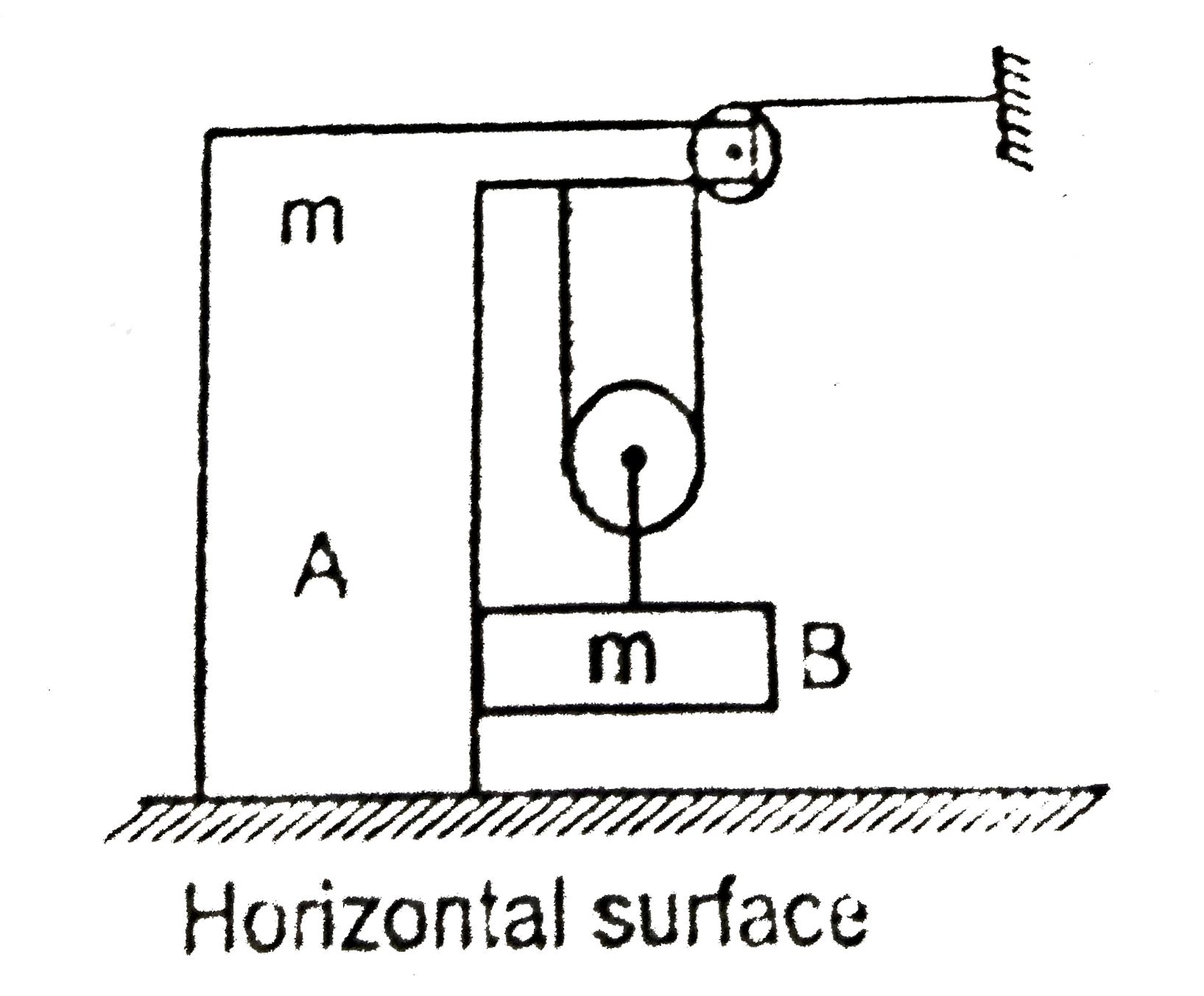
Normal reaction between A and B is :
mg
mg9
2mg9
None of these
The correct Answer is:C
T=2ma
mg−2T=ma2
mg−4ma=ma2
mg=9ma2
a=2g9
T=4mg9
N1=ma=2ma9
N2=mg+2T
N2=mg+2T
=mg+8mg9=17mg9.

Similar Questions
Figure shows an arrangement of pulleys and two blocks. All surfaces are frictionless . All pulleys and strings are massless. All string are smooth and massless.
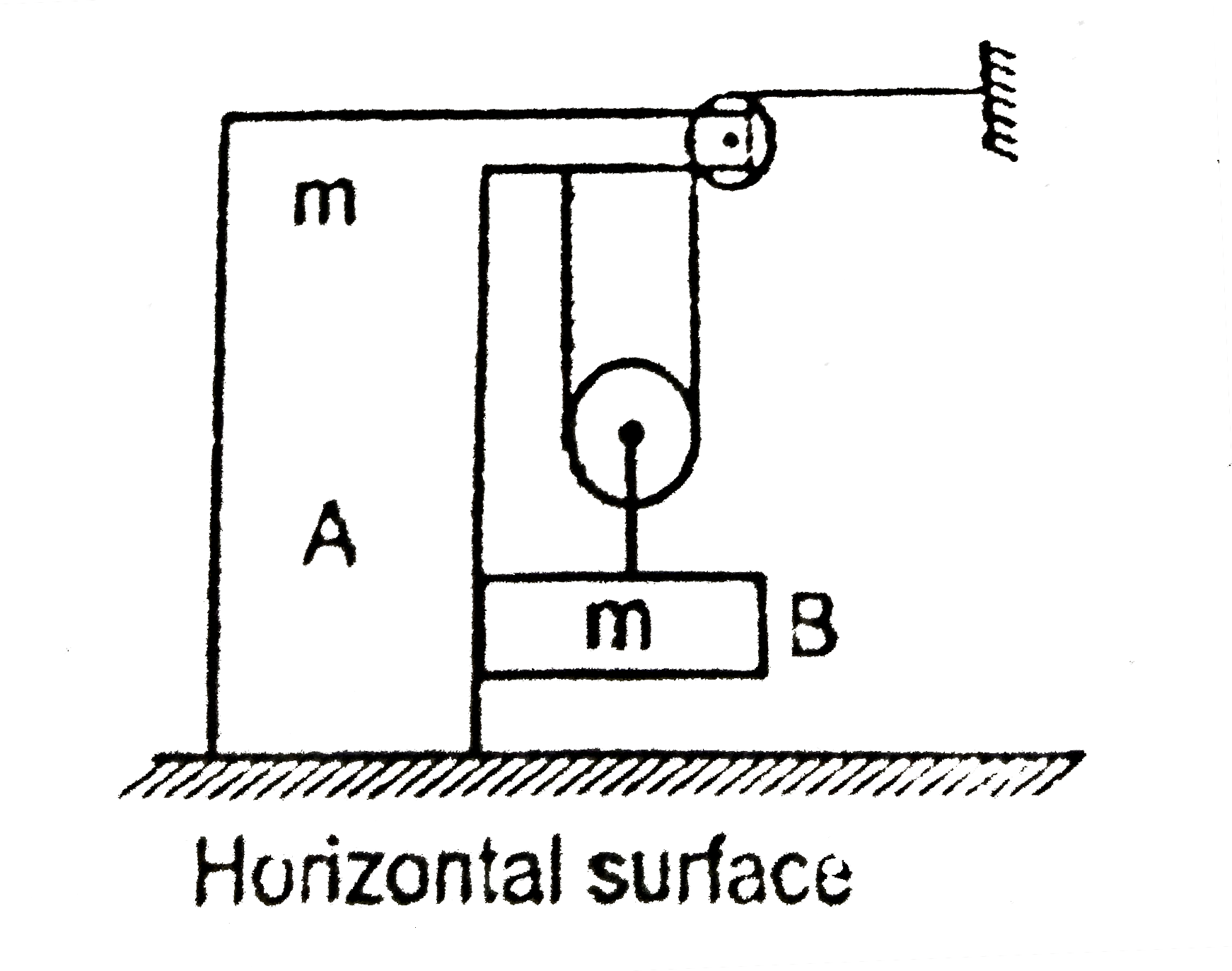
Normal reaction between A and ground is :
View SolutionFigure shows an arrangement of pulleys and two blocks. All surfaces are frictionless . All pulleys and strings are massless. All string are smooth and massless.
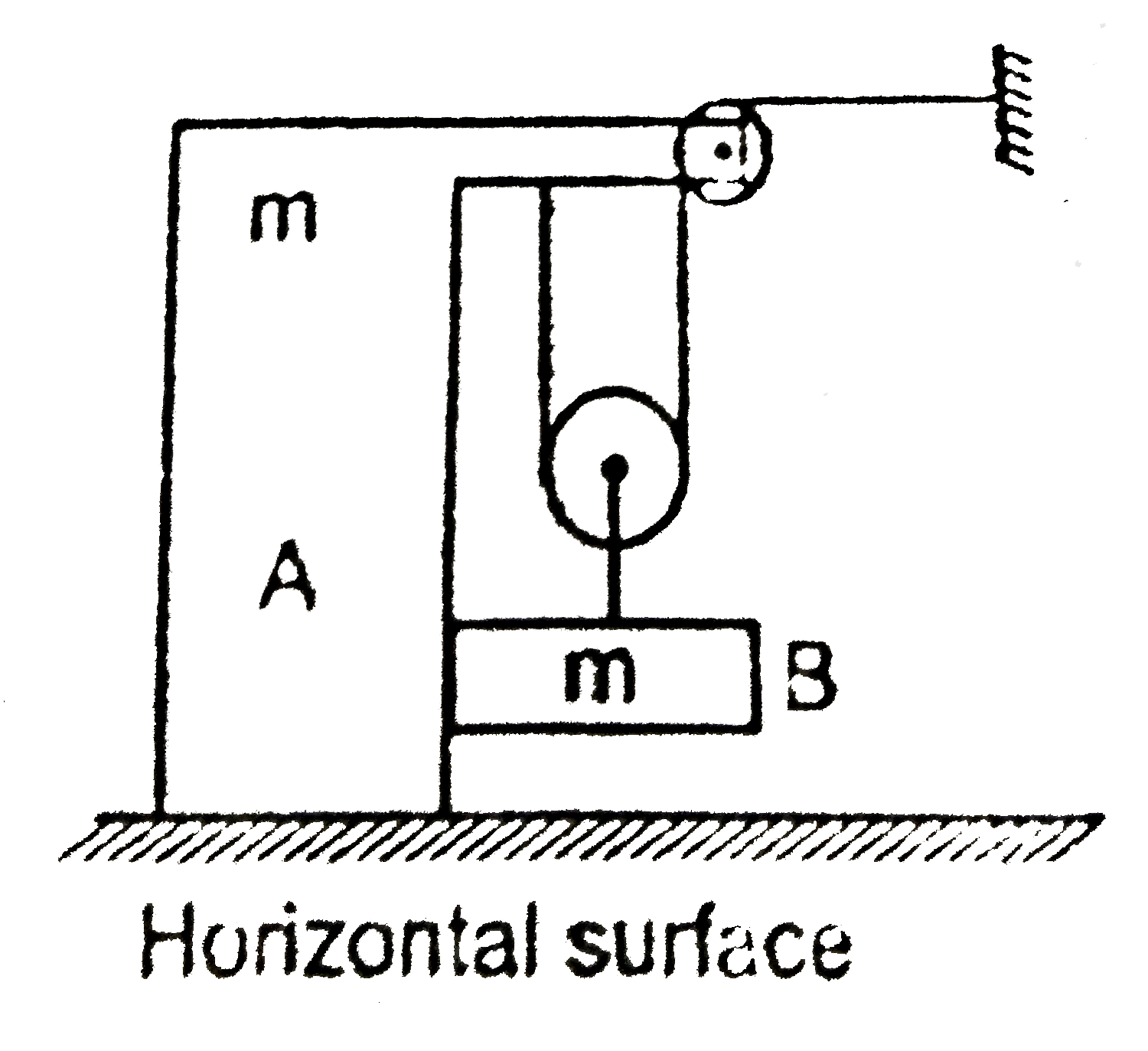
The acceleration of block A is :
View SolutionBoth the blocks shown in figure have same mass 'm'. All the pulley and strings are massiess.
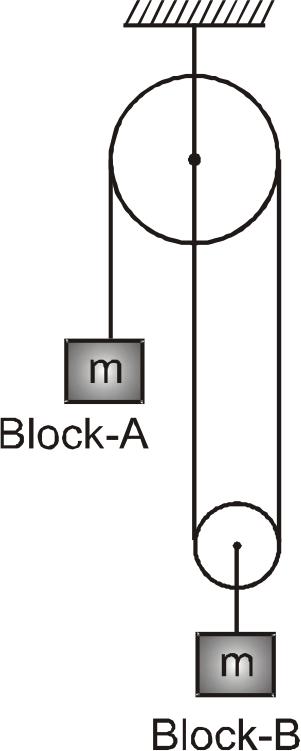
View SolutionThe time period of block of mass m is (Assume pulleys and string are massless)
_PHY_E06_345_Q01.png) .
.
View SolutionFind the acceleration of blocks in fig. The pulley and the string are massless.
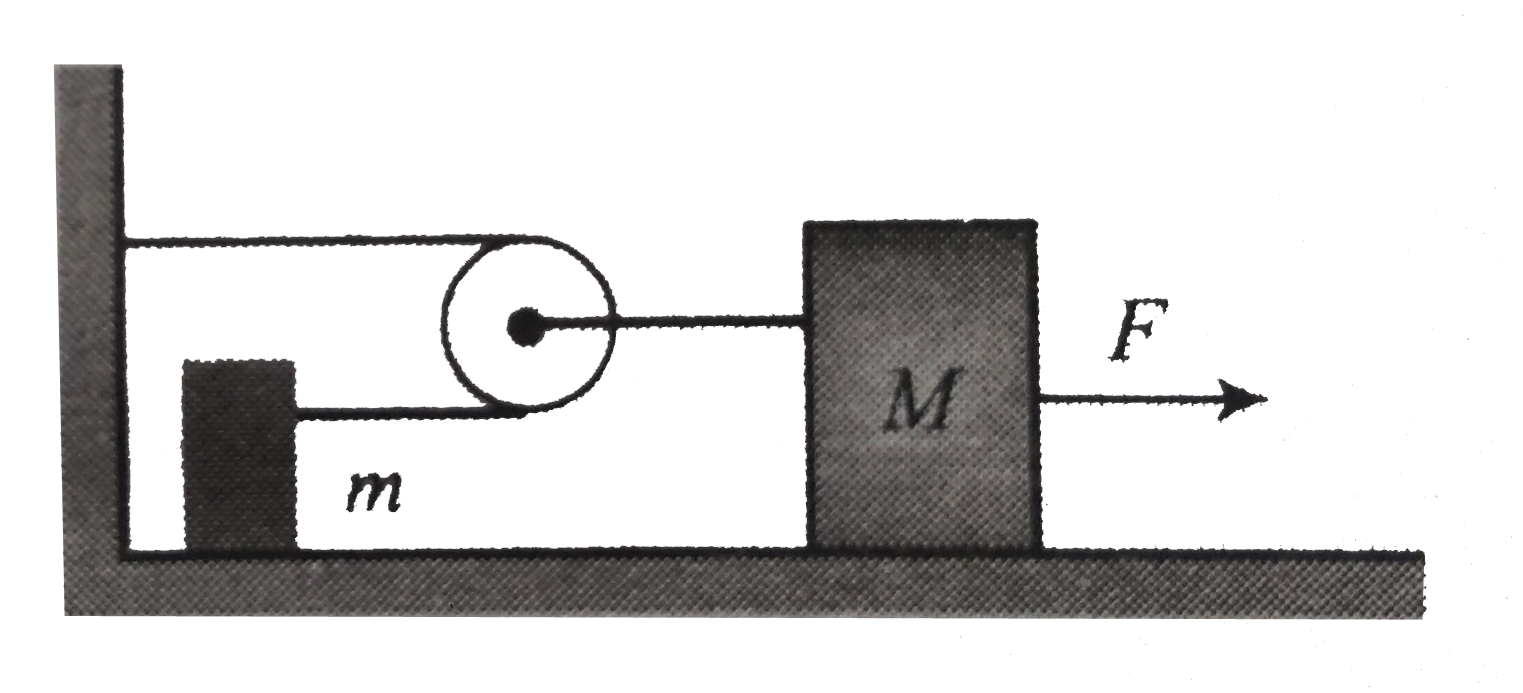
View SolutionAcceleration of pulleys and blocks are as shown in the figure. All pulleys & strings are massless & frictionless magnitude of aA and aB are :
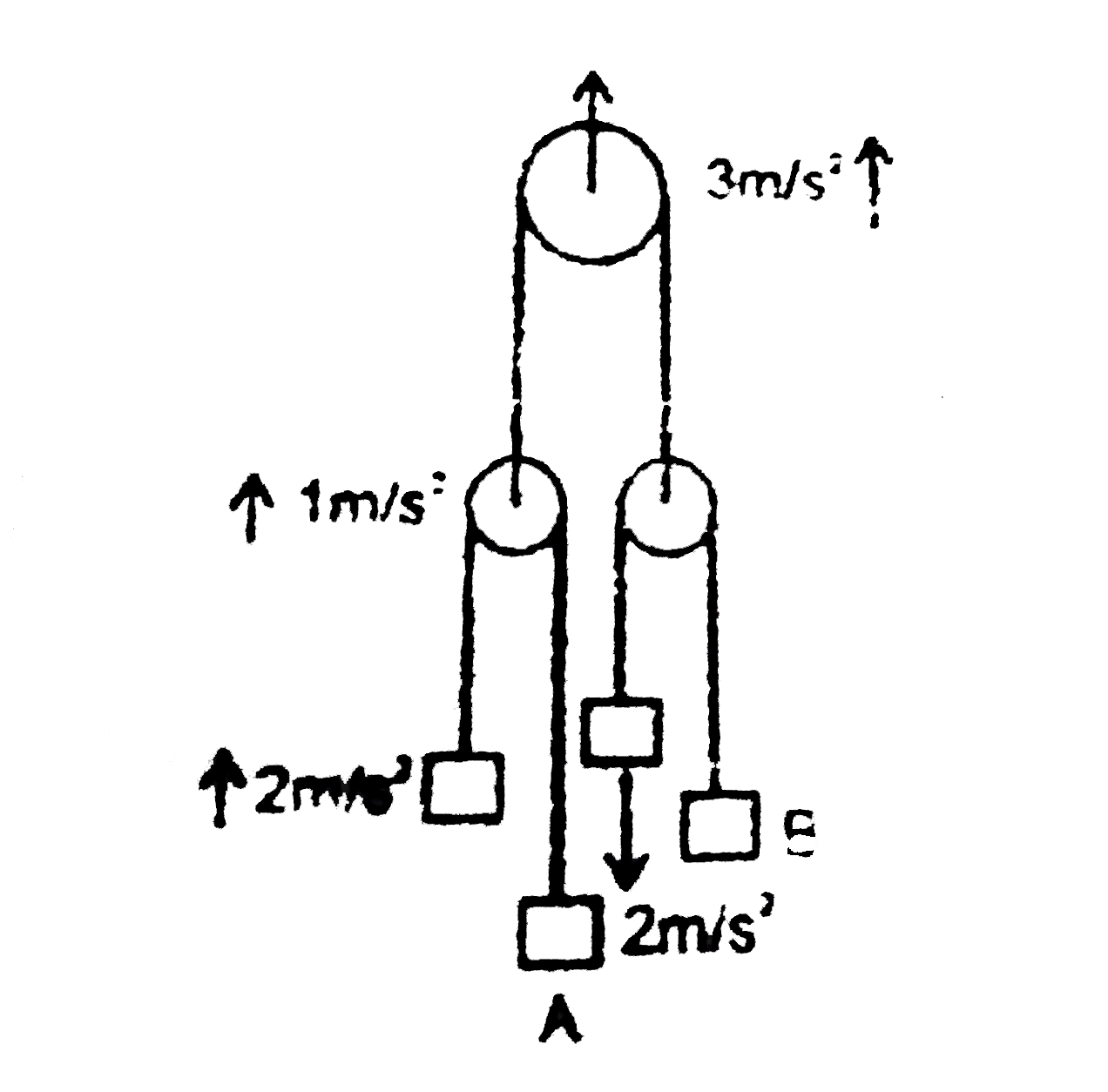 .
.
View SolutionIn the shown arrangement , both pulleys and the string are massless and all the surface are frictionless. Find the acceleration of the wedge.

View SolutionIn the arrangement shown, the pulleys and strings are massless. The acceleration of block B is :
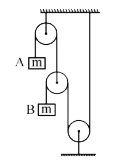
View SolutionFind the accelerations of two blocks. Assume pulleys and strings are massless and frictionless. Also assume the string to be inextensible.
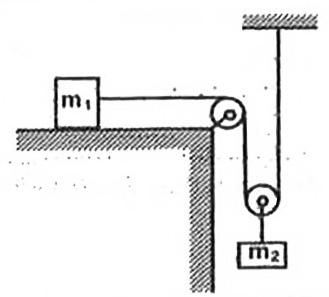
View SolutionAn arrangement of pulleys and blocks is shown in the figure . The two pulleys and the strings are ideal. If m2>m1 , then which of the following (s) is / are wrong ?
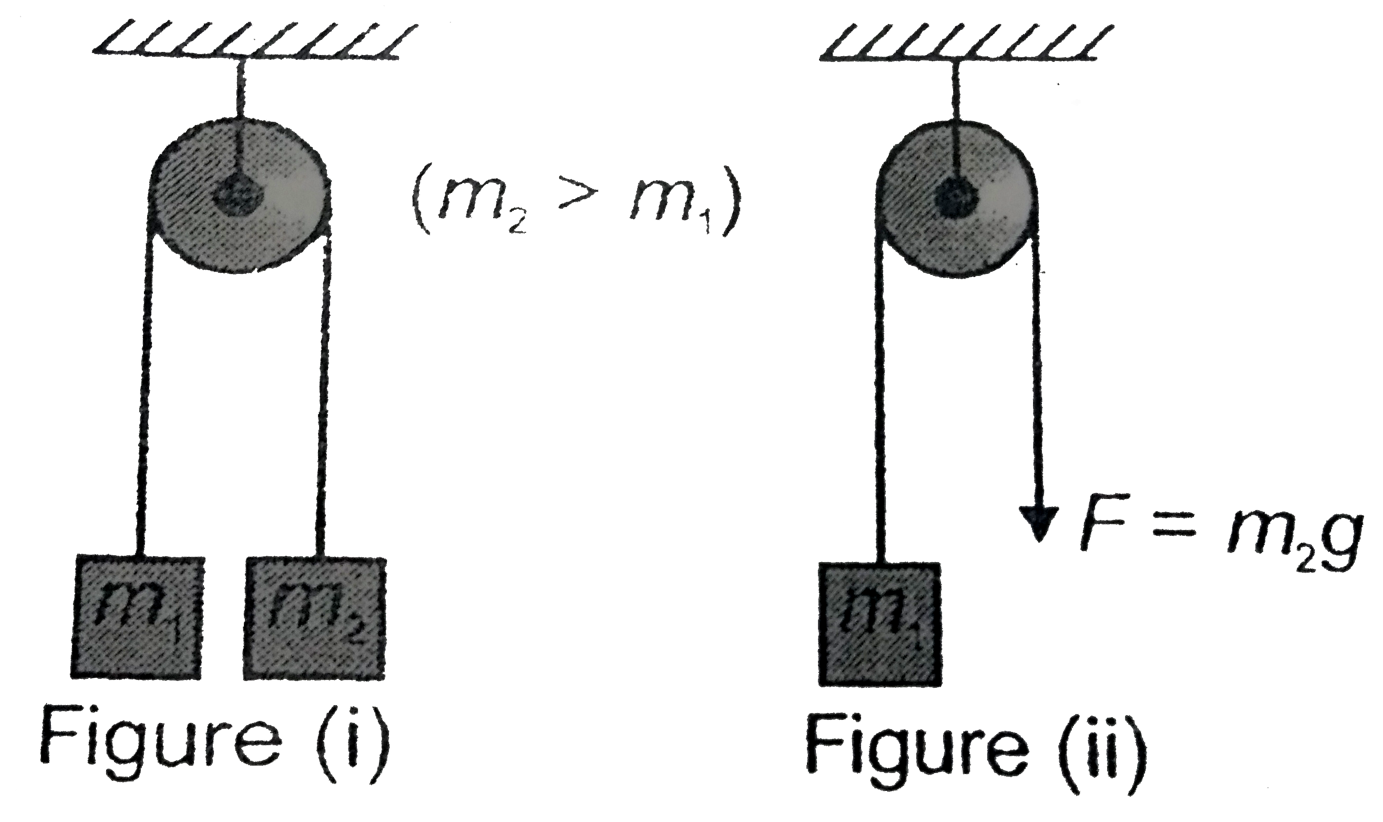
View Solution
